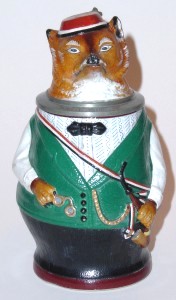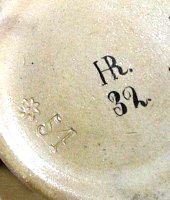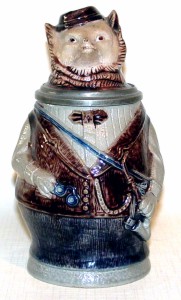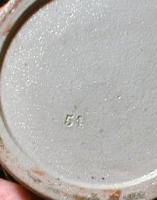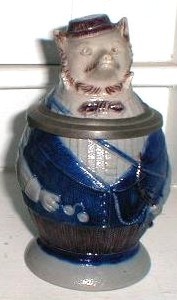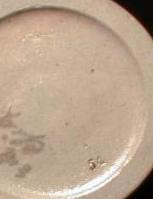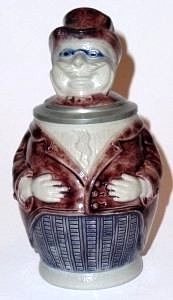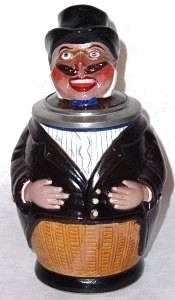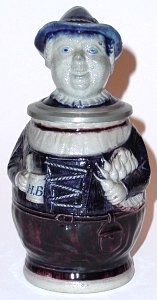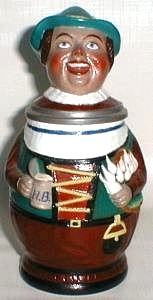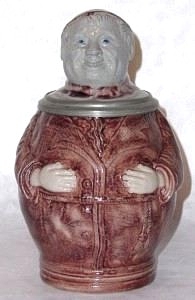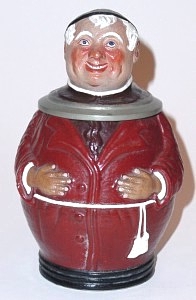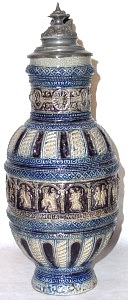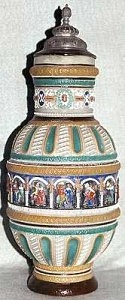These are the bases of two character steins manufactured in Freising during the Schön-Borho era of 1876. You'll note that both have a "large font" model number and the one on the right has an Edelweiss looking "Q.C." mark, and the other has what looks like an "M" over a "V." This large model number (10mm) was used only during the Schön-Borho era. Both steins are overpainted in full color and have an inked on "type 5" HR mark. The numbers "35" and "49," decor/model numbers, are also inked on. There were economic and political factors at work during the mid 1880s that played a part in what happened at the Freising factory. Wages were on the rise, countries to which they exported their wares began to charge import duties, there were too many steinzeug factories in operation and the supply was outstripping the demand. Records from the Regensburg factory show that business had declined and workers were in danger of being let go. The factories in the Westerwald were probably facing the same issues. In what was probably a move to remain competitive, the Hauber and Reuther factory introduced a line of enameled, saltglazed steinzeug. Evidently the first pieces to be so decorated were early production pieces still in inventory, narrow bodied character steins and the "altdeutsch" style pieces that had been warehoused years earlier. Hauber and Reuther applied the enamel directly over the existing cobalt, or manganese saltglaze. Due to the fact that they were decorated over previously applied décor, the pieces were marked with an inked on, "type 5" HR mark and because they then differed from the originals, they were also given new model numbers. ~~~~~~~
Model 54 - The fox on the left is a Schön-Borho manufactured fox with the large font model number. When it was overpainted in full color it was given the "type 5" HR mark and a #32 decor/model number. Note that both the blue and purple saltglaze Foxes have small font model numbers but different body styles. The narrow bodied fox in the middle is from the "Schön-Hauber" production period. The robust bodied piece is from the "Hauber" era. ~~~~~~~ OTHER EXAMPLES The bases at the top of the page belong to the first two examples below, the Rich Man (#97), and the Alpine Woman (#57).
|


